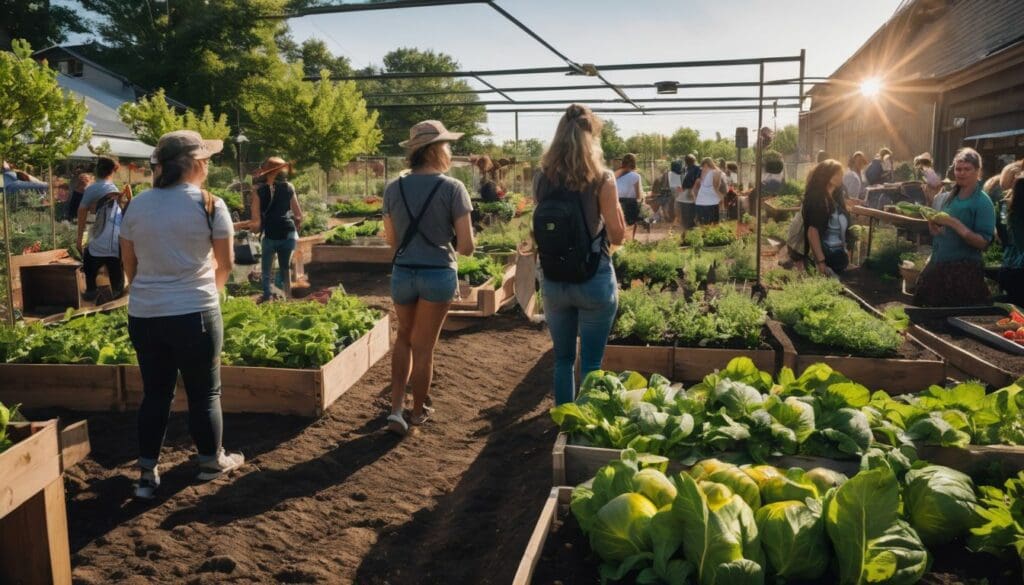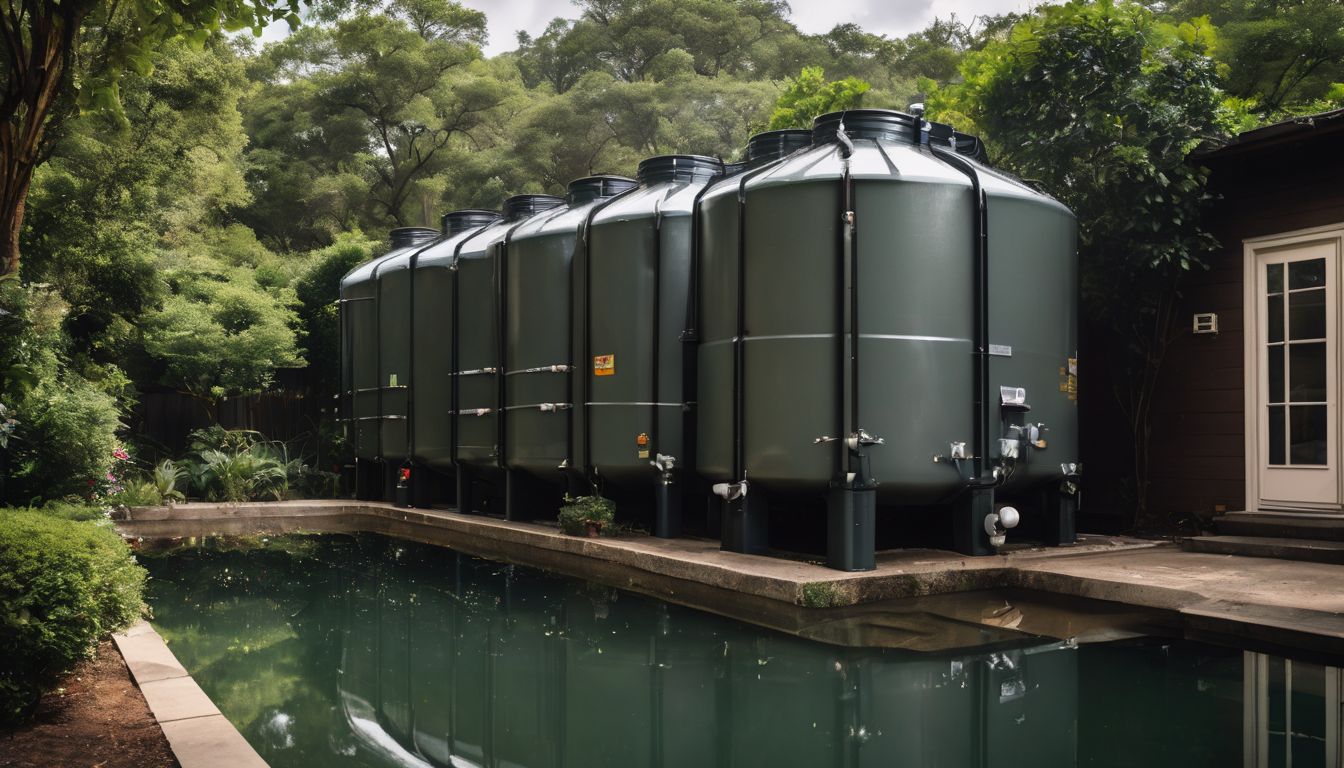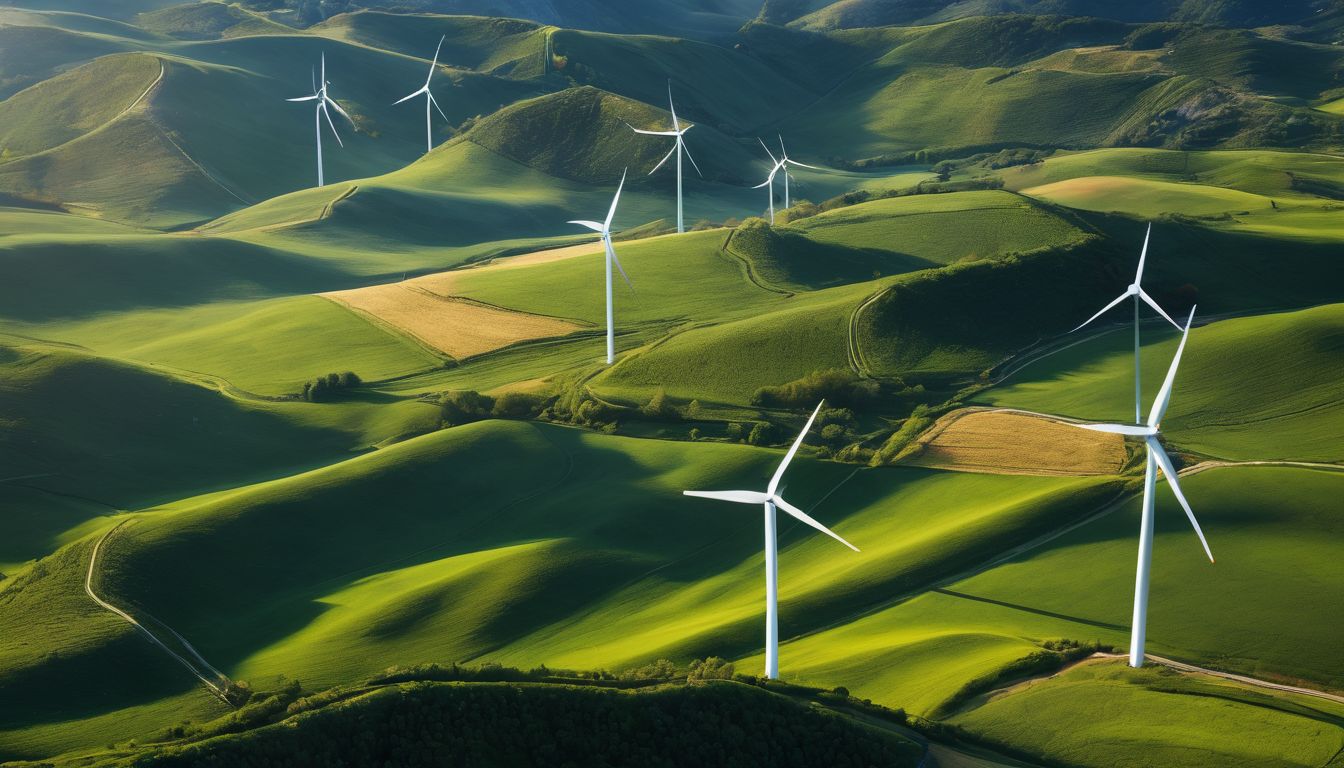Many communities yearn for a greener future, yet feel daunted by the process of initiating change. Renewable Energy Communities can slash carbon footprints and foster local solidarity.
This guide will navigate you through each step towards creating your own thriving green hub. Dive in to empower your neighbourhood!
Key Takeaways
- A Renewable Energy Community (REC) unites locals to use sustainable energy, reducing carbon emissions and fostering a green culture.
- Key steps in setting up an REC include defining goals, engaging stakeholders, financial planning, securing permits, installing energy assets and regular maintenance.
- Challenges faced when establishing RECs can include financial obstacles, navigating regulatory frameworks and overcoming community resistance.
- Examples from Europe and Africa demonstrate the success of RECs in cutting costs and emissions while boosting local economies and employment.
- Active participation from all community members is vital for the initiative’s success; this includes involvement in decision-making processes to ensure transparency and collective responsibility.
What is a Renewable Energy Community (REC)?
A Renewable Energy Community (REC) brings together local residents to develop and use sustainable energy. These groups focus on harnessing power from natural resources like the sun, wind, or water to create electricity that doesn’t harm the environment.
Members work collaboratively to plan, finance, and manage projects that generate clean energy for communal benefit.
In a REC, people take control of their energy needs while cutting down greenhouse gas emissions and reducing dependence on fossil fuels. This kind of initiative fosters a green culture within a community by highlighting environmental stewardship and sustainability.
It empowers locals with knowledge about renewable technologies and provides them with tools for environmental education. Together they contribute actively towards achieving a more sustainable community movement through collective action in climate conservation efforts.
Benefits of Renewable Energy Communities
Renewable Energy Communities provide environmental impact, financial savings, and community empowerment.
Environmental impact
Renewable energy communities significantly reduce carbon emissions, promoting a healthier environment. By implementing sustainable practices and reducing reliance on non-renewable resources, these initiatives contribute to cleaner air and water for local communities.
This leads to a more eco-friendly and sustainable way of living while supporting conservation efforts.
With the environmental benefits in mind, let’s explore how renewable energy communities also lead to financial savings for individuals and the broader community.
Financial savings
Transitioning from the environmental impact to financial savings, setting up a Renewable Energy Community (REC) not only benefits the environment but also provides significant financial savings for community members.
By collectively investing in renewable energy sources, REC participants can reduce their energy bills by generating and using clean, sustainable power sourced within their community.
This direct access to locally generated green energy helps lower electricity costs and promotes long-term cost stability. Additionally, through innovative financing models such as group purchasing or cooperative ownership of renewable assets, communities can further maximise financial savings while contributing to a greener future.
Community empowerment
Community empowerment involves harnessing the collective power of local residents to drive positive change. It encourages community members to take an active role in decision-making processes, fostering a sense of ownership and pride in sustainable initiatives.
By involving the community in renewable energy projects, skills are developed, creating local employment opportunities and empowering individuals to become stewards of their environment.
Engaging with the community through educational workshops and involvement in project planning ensures that everyone has a voice and becomes an active participant in driving towards a greener future.
Step-by-Step Guide for Setting Up a Renewable Energy Community
Define your goals, engage stakeholders, determine financial models and contracts, obtain permits, install energy assets, establish the community, and monitor performance – learn how to create a sustainable future for your community by reading more about our step-by-step guide.
Defining goals and conducting a study
To establish a successful Renewable Energy Community (REC), the initial step involves defining clear goals and conducting a comprehensive study. This process entails identifying the specific sustainability objectives, such as reducing carbon emissions or increasing energy efficiency.
Furthermore, conducting a thorough study involves researching the local community’s energy consumption patterns, environmental impact, and identifying potential renewable energy sources available in the area.
Once these goals are defined and thoroughly studied, it sets the foundation for initiating proactive measures towards building a sustainable and environmentally conscious community.
By understanding the local needs and resources through this process, REC leaders can effectively strategise to implement impactful green initiatives that resonate with the community’s values.
Identifying and engaging stakeholders
- Conducting stakeholder mapping to identify all potential contributors and beneficiaries of the initiative.
- Engaging with local residents, businesses, community groups, and government representatives to build support.
- Organising stakeholder meetings and workshops to gather input and feedback on the community’s renewable energy goals.
- Collaborating with local schools, universities, and research institutions to involve young people in the sustainability efforts.
- Establishing partnerships with environmental organisations and industry experts to leverage their knowledge and resources.
- Encouraging active participation from diverse community members through inclusive communication strategies.
Determining financial model and signing contracts
To establish a sustainable community project, it is crucial to determine the financial model and sign contracts. This step involves careful planning and negotiation to ensure the smooth implementation of the renewable energy community initiative. Here are key steps involved in this process:
- Conducting thorough research to understand the financial implications and potential funding sources for the renewable energy community project.
- Collaborating with stakeholders to develop a robust financial model that aligns with the goals of the initiative and secures necessary funding.
- Engaging legal experts to draft and review contracts with suppliers, partners, and other involved parties to safeguard the interests of the renewable energy community.
- Proactively seeking out opportunities for grants, sponsorships, or partnerships that can support the financial sustainability of the initiative.
- Establishing clear metrics and benchmarks within contracts to monitor performance and ensure accountability throughout the lifespan of the renewable energy project.
Obtaining necessary permits and installing energy assets
To establish a Renewable Energy Community, obtaining the necessary permits and installing energy assets is crucial. Here’s how you can achieve this step-by-step:
- Research and identify the permits required for renewable energy projects in your locality.
- Engage with local authorities and regulatory bodies to understand the application process.
- Prepare and submit permit applications, ensuring compliance with all environmental and safety standards.
- Collaborate with renewable energy suppliers to source and install solar panels, wind turbines, or other energy assets.
- Conduct thorough inspections to ensure proper installation of energy assets and adherence to regulations.
- Create a maintenance plan for ongoing monitoring and upkeep of the installed energy infrastructure.
Establishing the Renewable Energy Community
To establish a renewable energy community, follow these steps:
- Define the goals and conduct a comprehensive study to understand the community’s energy needs and potential resources.
- Identify and engage stakeholders, including local residents, businesses, and government bodies.
- Determine the financial model by exploring funding options, grants, and partnerships. Sign contracts with relevant parties to secure investment.
- Obtain necessary permits for renewable energy installations and ensure compliance with local regulations. Install energy assets such as solar panels or wind turbines.
- Establish the Renewable Energy Community by creating a framework for governance, decision – making processes, and community involvement.
- Monitor performance regularly to assess energy production and usage. Implement maintenance schedules to ensure smooth operations.
Monitoring performance and maintenance
To ensure the continued success of the Renewable Energy Community, it is crucial to monitor performance and conduct regular maintenance. Here are the key steps for monitoring and maintaining the community’s energy assets:
- Regularly assess the performance of renewable energy systems to ensure optimal efficiency and identify any issues that may arise.
- Conduct routine maintenance on energy assets, including solar panels and wind turbines, to keep them operating at their peak performance levels.
- Monitor energy consumption within the community to track progress towards sustainability goals and identify areas for improvement.
- Engage with community members to raise awareness about the importance of monitoring performance and maintenance in achieving long-term environmental impact reduction goals.
- Implement a proactive approach to address any issues or inefficiencies promptly, ensuring that the Renewable Energy Community continues to thrive in its sustainable efforts.
Challenges of Establishing a Renewable Energy Community
Establishing a renewable energy community can face challenges such as financial barriers and regulatory hurdles, as well as potential resistance from some members of the community.
Overcoming these obstacles requires careful planning, effective communication, and collaboration with stakeholders.
Financial barriers
Financial barriers can pose significant challenges when establishing a renewable energy community. Securing initial funding for the purchase and installation of energy assets is often a major obstacle, as traditional financing models may not be readily available or suitable for community-based projects.
Additionally, ongoing operational and maintenance costs can strain limited resources, requiring careful financial planning and innovative solutions to ensure long-term sustainability.
However, by exploring alternative funding sources such as grants, loans, or crowdfunding, communities can overcome these barriers and advance their green initiatives towards creating a sustainable future for all.
Regulatory hurdles
Navigating the regulatory framework poses a significant challenge when establishing a Renewable Energy Community. Local, regional, and national regulations must align with the community’s renewable energy goals.
Securing permits for installing energy assets and complying with environmental standards are vital to ensure smooth operations.
Understanding the legal requirements related to community-owned energy initiatives helps in mitigating potential obstacles. It involves engaging with local authorities and obtaining necessary approvals while adhering to environmental laws.
Community resistance
Navigating through regulatory hurdles can lead to encountering community resistance when establishing a Renewable Energy Community. Understanding and addressing concerns about noise, visual impact, or changes in the local landscape is crucial for gaining community support during the planning and implementation phases.
Engaging with residents through open dialogues, providing transparent information, and involving them in decision-making processes can help mitigate resistance and build a sense of ownership towards the initiative.
Community engagement plays a pivotal role in overcoming resistance by fostering understanding, trust, and collaboration among all stakeholders. Encouraging participation in educational workshops, offering opportunities for public feedback, and highlighting the benefits of renewable energy can help shift attitudes from scepticism to acceptance within the community.
Examples of Successful Renewable Energy Communities
– European initiatives have successfully established renewable energy communities, showcasing the positive impact of community-driven sustainable energy projects. Global examples also highlight how these initiatives can transform and empower local communities towards a greener future.
Overview of European initiatives
European initiatives have been leading the way in promoting community sustainability and green living. These initiatives focus on local climate action frameworks, sustainable community cultures, and energy community planning.
They encourage eco-friendly practices and engage communities in environmentalism through various programs and projects. This has resulted in the establishment of successful renewable energy communities, showcasing the impact of green team engagement and local climate action.
The European initiatives serve as inspiring examples for global communities seeking to drive change towards a more sustainable future. By highlighting these successes, environmentally conscious individuals can gain valuable insights into creating their own impactful community environmental initiatives.
Global examples and their impact on the community
Renewable Energy Communities in the Netherlands have led to a significant reduction in greenhouse gas emissions. Rooftop solar panels are prevalent, and wind farms contribute to sustainable energy production.
The community benefits from lower energy costs and increased local job opportunities, boosting economic growth and reducing reliance on traditional energy sources.
In parts of Africa, the establishment of microgrid systems has provided clean energy access to remote areas previously without electricity. This has improved living standards, enabled better education through extended study hours, and supported the emergence of local businesses.
Conclusion
In conclusion, creating a community green initiative requires careful planning and engagement. Establishing a Renewable Energy Community involves defining goals, engaging stakeholders, and obtaining necessary permits.
Overcoming financial barriers and regulatory hurdles is crucial for the success of such initiatives. Ultimately, successful examples from around the world demonstrate the positive impact of renewable energy communities on local environments and economies.
FAQs
1. What is a Green Community Initiative?
A Green Community Initiative is a program aimed at making your neighborhood more eco-friendly by promoting sustainability and community engagement in environmental activities.
2. How can we start our own local green movement?
To kickstart your local green movement, begin with a step-by-step guide that involves rallying neighbors, identifying sustainable practices like using local food sources, and creating community-wide goals.
3. Who should be involved in setting up the Community Sustainability Program?
Everyone in the community can take part—from families to schools and businesses—to ensure broad engagement and diverse input for the sustainability program’s success.
4. What benefits will our community gain from going green?
Your community will enjoy fresher air, healthier living options through access to local food sources, stronger unity from working on ecofriendly projects together, and overall improved quality of life.





